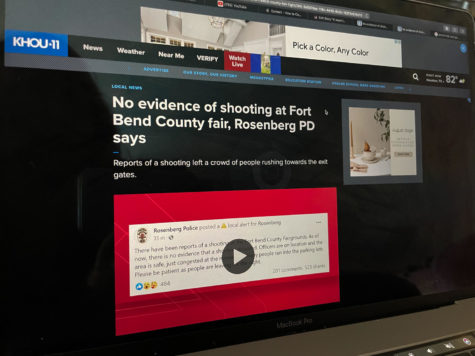The ‘Fine Print’
The craziness behind commercials.
May 3, 2018
“This medicine will change your life! You’ll spend your days happy and with your family, rather than in the hospital getting treatment!” Smiling faces move across the screen, visiting dream locations and not worrying about a thing. Then, a super fast voice jumps in. “Common side effects may include itching, swelling of the joints, loss of blood, and dizziness. Other side effects include shortness of breath, severe migraines, and sensitivity to certain foods. The medicine has been known to cause several forms of brain cancer, depression, and lung cancer, which can lead to death.” The voice-over returns to a slow, happy voice. “This medication will change your life for the better!”
Possible side effects may include death.
— Commercial
Sound familiar? This is how many commercials on TV are formatted, and it’s not just medication commercials that are built to go around the bad. Commercials use several different advertisement techniques that in a way, are made to fool people. Who can blame the companies? After all, they have families to support just like everyone else, but it’s still important for people to realize that commercials glamorize products and services, and sometimes, believing everything that commercials say will lead to an empty wallet.
Take an insurance commercial for example. Every company claims to help people save so much money, but several people get frustrated and hate their insurance. Many companies realize that people are going to get angry over the insurance provided and may choose to file a lawsuit on the company. However, the company almost always wins because they can refer back to a time that the person was warned that they would not receive what they wanted for their money— a commercial. It may sound crazy because commercials only seem to share the best about a company, but it’s true. Many commercials do share the bad aspects of their companies, but they say them really fast or include them in small text at the bottom of the screen in a color that is barely visible.
Some may see fast talking or fine print as cruel and evil, but in the company’s shoes, they would probably do the same thing because it is a technique that is essential for financial success. If companies proclaim every negative aspect of a product or service in a noticeable manner, they won’t have high sales because no one will want to spend their money on the company. However, if they do not include the information in some way, they would probably face a lawsuit and lose the case.
Because companies cannot get around this type of advertising, it is up to consumers to be wise with their money. A great financial plan offered in a catchy commercial may really only be great in Oregon, on a Wednesday, for a person that lives in a house that costs 400,000 dollars. A medicine may make someone feel great one day, and then they wake up the next day with lung cancer— which can lead to death. The “healthy” energy drink with plenty of protein and hardly any sugar may contain ingredients that aren’t even considered to be food.
How, someone may ask, can things like this be avoided? The answer is clear— attention and research. People should pay attention to the details of the advertisements that they are interested in and should do further research on products and services before putting their money into them. Chances are, many people have written reviews on certain companies and have a story to tell about their experience. Also, companies are required to put all of their ‘fine print’ on their websites. By being more careful about purchases, people can save both time (they won’t be wasting time on bad products) and money– and don’t forget about saving themselves from crazy side effects and going broke.













